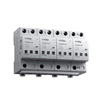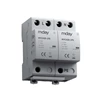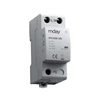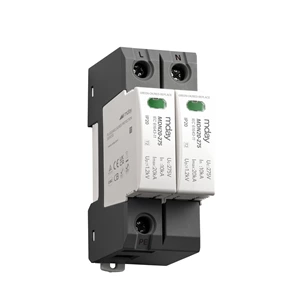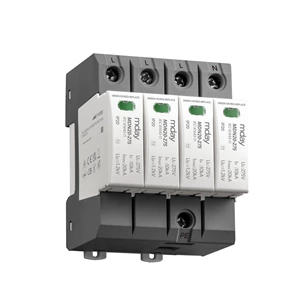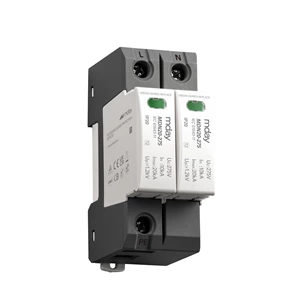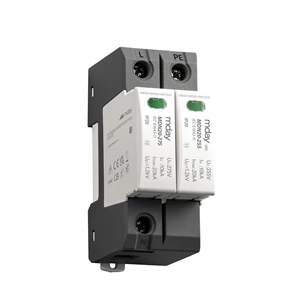Surge Protectors For Indoor Buildings
Lightning Protection and Grounding for Substation Equipment: Lightning protection for substation equipment is inseparable from building lightning protection. According to the latest national mandatory standard GB50054-95, lightning protection grounding for buildings and equipment should utilize equipotential bonding, rather than the traditional separate grounding grids. Equipotential bonding involves electrically connecting the building itself and various conductive materials inside and outside it with conductors to ensure equal potential. Because lightning current peaks are extremely large, the potential of any path through it rises immediately to a very high level relative to the ground. This can cause side flashes to nearby electrical and electronic equipment and people, which are still at ground potential, potentially causing equipment and personal accidents. Therefore, equipotential bonding is a key lightning protection measure.
Building surge protective device
The building's own surge protector devices are the first line of defense against lightning strikes on electrical equipment and systems within the building. The building's lightning protection performance directly impacts the lightning protection of the electrical equipment within. Therefore, prioritizing lightning protection for the building itself is paramount.
Lightning protection for modern buildings primarily consists of top lightning conductors, mesh lightning rods, and main steel reinforcement within the building's beams, columns, floor slabs, and surrounding walls as downconductors, with the underground reinforced concrete foundation serving as the grounding conductor. The electrical connection between the steel network serving as the mesh lightning rods, downconductors, and grounding conductor must be considered during building design and construction to create an ideal "Faraday cage" structure. surge protection device The integration of lightning protection nets with the building's reinforced concrete has become a recognized economical and reliable lightning protection method both domestically and internationally. Therefore, during design and construction, provision should be made for welded joints within the steel reinforcement within each floor slab, beam, and column to facilitate connection to indoor and outdoor grounding wires.


